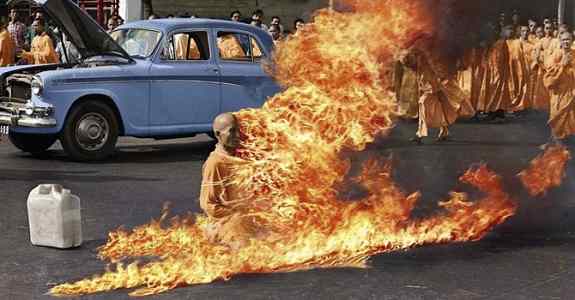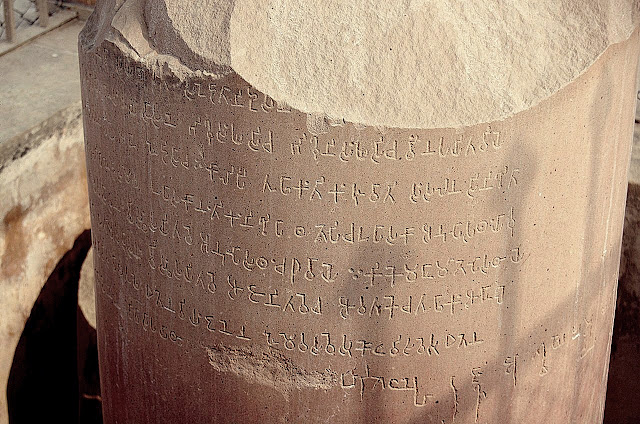Wade Hampton III: Red-Shirt Politics
Monarchy degenerates into tyranny, aristocracy into oligarchy, and democracy into savage violence and chaos. —Polybius
In the previous installment of this here blog I discussed the life of Wade Hampton III, the namesake of Wade Hampton Boulevard here in Greenville, South Carolina. The man has numerous roads, streets, parks, monuments, and other manmade structures named after him throughout the state. He was a wealthy aristocrat in the ancient sense—aristokratia in Greek means “power of the best”; and he endeavored to live up to that meaning by upholding the ancient noble virtues of self-cultivation, fearlessness, just leadership, and, when called for, heroism.
In part one of this obscure biographical sketch we described Wade Hampton III’s life up till the end of the American Civil War. At this point his family’s wealth, mainly in the form of a network of plantations, was in ruins, and the life that he lived before the War was, as in the novel and the classic movie, gone with the wind. Instead the south was virtually an occupied enemy territory under the Reconstruction policies of President Ulysses S. Grant. Federal troops were stationed in the capitol city and elsewhere in the state; many Confederate officers, which is virtually to say the southern elites, were not allowed to run for political office; the state of South Carolina had a black majority population at that time, most of whom, for obvious reasons, were inclined to vote Republican, since the Republicans had ended slavery; and a multitude of carpet baggers rushed into the south to exploit the fact that so many born southerners were excluded from holding political or economic power.
The situation was very chaotic, politically, socially, and morally. Most white southerners, and a great many northerners, evidently including Lincoln himself, were of the opinion that blacks were racially, mentally inferior to whites and, although enslaving them was not necessarily a good thing, they still should not be allowed to vote or participate in the very important process of democracy. Consequently, fellows like Nathan Bedford Forrest, a very accomplished cavalry officer during the war and, among other things, a slave trader before it, established the first iteration of the Ku Klux Klan. The purpose of this eh, society was to overthrow Reconstruction Republican state governments, largely through terrorizing and occasionally murdering white and black people daring to vote Republican. (Remember that Lincoln was a Republican, and that it was the Republican Party that did most to free the slaves, and the southern Democrats who did most to preserve slavery. The northern Democrats were somewhat indifferent and were largely inclined to let the Confederacy secede from the Union and keep their slaves. Black voters in the USA voted mostly Republican until Lyndon Johnson came along in the 1960s with the new and improved welfare state of “the Great Society” and his notorious statement that he’d “have those [n-words] voting democratic for 200 years.” But maybe I digress.)
Anyway, the KKK, first iteration, was fairly well wiped out by federal forces by the early 1870s. Consequently, the Klan was replaced by militias or vigilante groups euphemistically called rifle clubs. They were armed paramilitary groups, and I have read that by the mid 1870s most white men in the south, Democrats of course, and even a few black Democrat voters, were members of one or other of these rifle clubs. They occasionally perpetrated lynchings and other outrages, but were mainly in training as “well-organized militias,” just in case they were needed. In addition to the rifle clubs, though, was another organization whose members were called Red Shirts. The primary purpose of this organization was to break up Republican political rallies and to intimidate and occasionally rough up white Republican politicians and black Republican voters.
Anyone familiar with modern western history may be reminded of another, similar group which arose in the first half of the 20th century. What other group wore a characteristic color of shirt and had the important purpose of breaking up opposition political rallies and intimidating and roughing up members of other parties? Hmmm. If any of you were reminded of the early Nazi brownshirts, in the early days masquerading as a sports and recreation society but really giving pissed off and destitute war veterans the opportunity to crack heads and run riot in the streets (literally), then you and I are reminded of the same group. The rifle clubs were more along the line of Ernst Röhm’s vision of the stormtroopers serving as the paramilitary branch of the Party, whereas the Red Shirts were more along the lines of Hitler’s vision of the group being used for purely political purposes. It may be, for all I know, that the Führer got the idea for his brownshirts from the postwar Democratic Party of the USA. He did allegedly get his ideas on eugenics from the same source. (But maybe I digress again.)
The reason why I bring up the Red Shirt stormtroopers of the postwar Democratic Party is that by the mid 1870s the social situation in the south had cooled down enough that a Confederate general could venture back into politics and run for state governor. In 1874 the Democrats gained a majority in the US House of Representatives, and some of the brutality and/or injustice of the Reconstruction Era was beginning to become unpopular even in the north. So, our man Wade Hampton III ran for governor of the state of South Carolina in 1876. He was a sincere partisan of the Confederate cause, endorsing, as I observed last time, the Lost Cause explanation of the Civil War, and he sincerely believed blacks to be inferior. He was willing to allow them their freedom, relatively speaking, but allowing them to vote was just too much. Nevertheless he was seen as a moderate because of his qualified cooperation with the Republican-run federal government, and was supported even by some blacks for his relative fairness, even-handedness, and paternal air. Importantly, the Red Shirts supported Hampton in the gubernatorial race of 1876, in which he ran against the incumbent Republican governor Daniel Henry Chamberlain.
During Hampton’s rallies he would be escorted by large groups of red-clad Red Shirts; and although I do not believe he was a member, or a member of the KKK before that, nevertheless he accepted their support. It was one of the most violent races for governor in US history, and it has been claimed that around 150 black people were killed by southern Democrat vigilantes in their efforts to prevent blacks from voting. President Grant sent more US troops into South Carolina, ostensibly to protect the lives and property of white and black Republicans.
As with the Democratic Party in much later times, vote-rigging was also a strategy for victory at all costs. Two counties in particular had considerably more votes cast for Hampton than there were registered voters. (I do not believe that Hampton himself endorsed either violent intimidation or vote-rigging, though he was a beneficiary of both.) This resulted in an amazing Schism reminiscent of medieval popes: the Republicans threw out the obviously bogus vote counts from the two counties in question, resulting in a win for Chamberlain; whereas the Democrats declared the vote tallies valid, kept the counts from the two most flagrant violator counties, and declared Hampton the new governor by about one thousand votes. This resulted in two parallel state governments: the Republicans under Chamberlain and the Democrats under Hampton. This state of affairs continued for six months, with neither side conceding defeat to the other. Eventually the state Supreme Court declared Hampton the winner, and the new governor went to meet with the new President Rutherford B. Hayes, a Republican. Hayes, for the sake of diplomacy and peace, allowed Hampton to take office by recalling all federal troops from South Carolina. Since military force was the only thing keeping Chamberlain as the “official” governor, he finally admitted defeat. He was having great difficulties anyway, since the Democrats were not participating in his government, and most of the landed citizens of the state were sending their taxes to the Hampton administration.
According to a historian named Richard Zuczek,
"the 1876 gubernatorial campaign in the Palmetto State was really a military operation, complete with armies, commanders, and bloodshed. Indeed, South Carolina might be a classic case of insurgency, with an attempt to overthrow, by terrorism and violence, a standing government."
Reading all this was not only amazing to me, it also did my heart good. It’s nice to see that large-scale political violence in the streets, vote-rigging, and attempts to overthrow a duly elected government are not new to American politics. We’ve already had our own versions of the Nazi SA, busting heads in the name of virtue and justice—much better versions of it than the pencil-armed soyboys and purple-haired lesbians of Antifa. (I just laughed after typing that, and I’m not sorry.)
People keep saying that America is turning to shit, becoming a third-world country, and so on; and people like me who are familiar with a lot of history can tell you: It’s ALWAYS been fucked up like this. True, the moral degeneracy of the New Left may be without parallel even in imperial Rome, but the political corruption, dishonesty, and winning By Any Means Necessary have been with us since politics began.
As for our man Wade Hampton III, he was a principled and virtuous gentleman by premodern standards, and I am persuaded that he deserves all the monuments, parks, and street names commemorating him and his role in American history. It’s really too bad that postmodern Democrats have lost any real semblance of honor and manly virtue. Yes, he very probably did not win the election of 1876 fairly, but he was supported by unscrupulous zealots, and sometimes, every once in awhile, a people have to stand up for themselves and fight—and fighting is not nice, or pretty.
Before ending this I suppose I should continue with Hampton’s life until the end. He lost favor with the Red Shirts, and with many other radical Confederate types, by being too moderate, and too willing to cooperate with the federal government. He was elected by less controversial means to the position of US Senator, in which office he served for two terms, until his notorious moderation made him too unpopular with southern whites out for a return to pre-War norms, and no black voting. After losing his seat in the US Senate he was appointed to the position of a United States Railroad Commissioner by Democrat President Grover Cleveland. Hampton died in Columbia, SC in 1902, and may he rest in peace.
(In Greenville county, where I reside, Wade Hampton got 70.7% of the vote.)
.jpeg)







You are so droll. I smile, laugh, smile some more.
ReplyDeleteRod Paynter
Powell River BC Canada